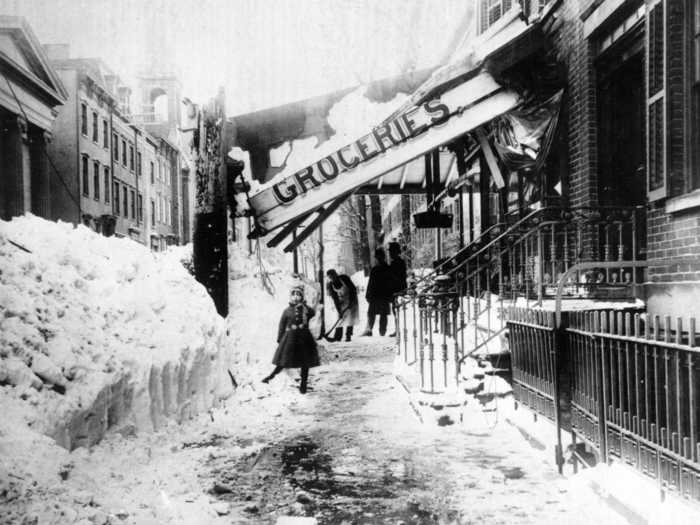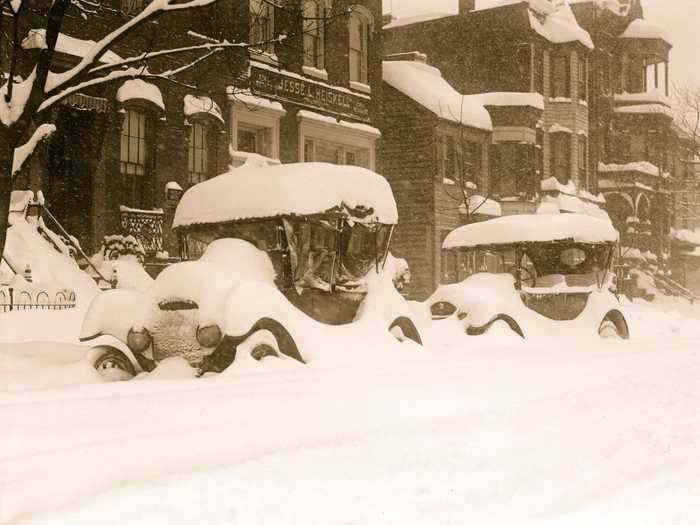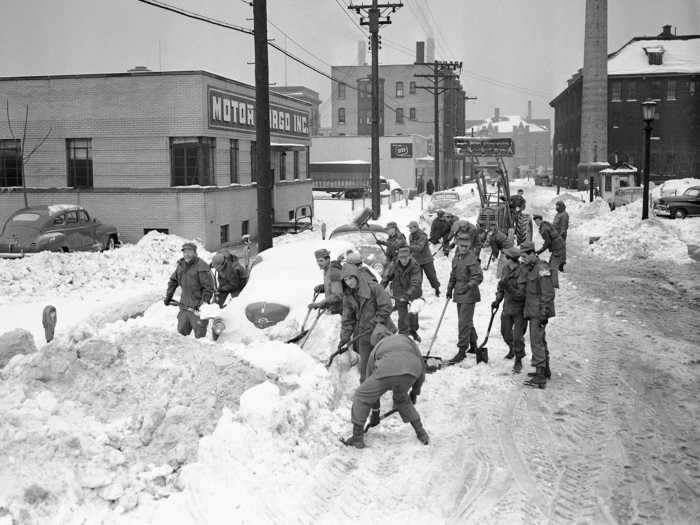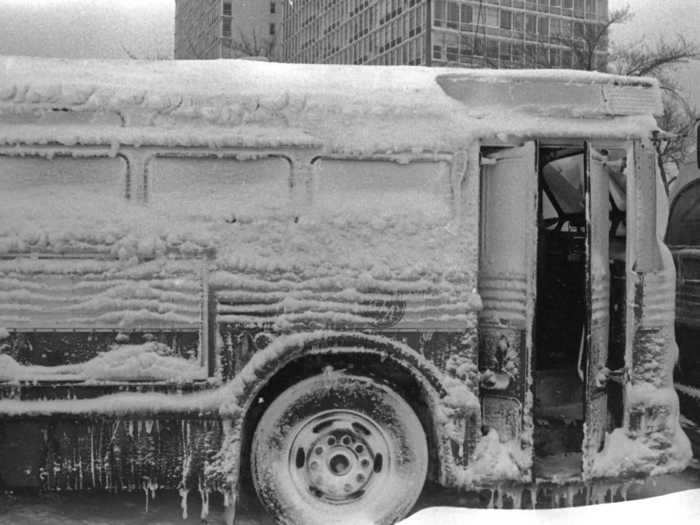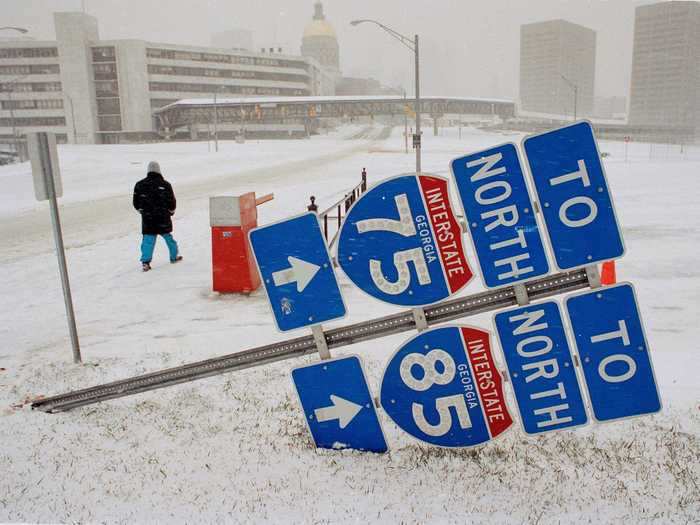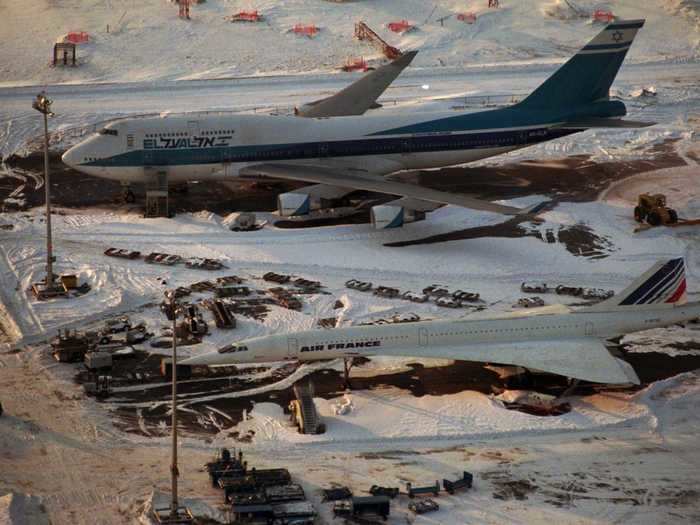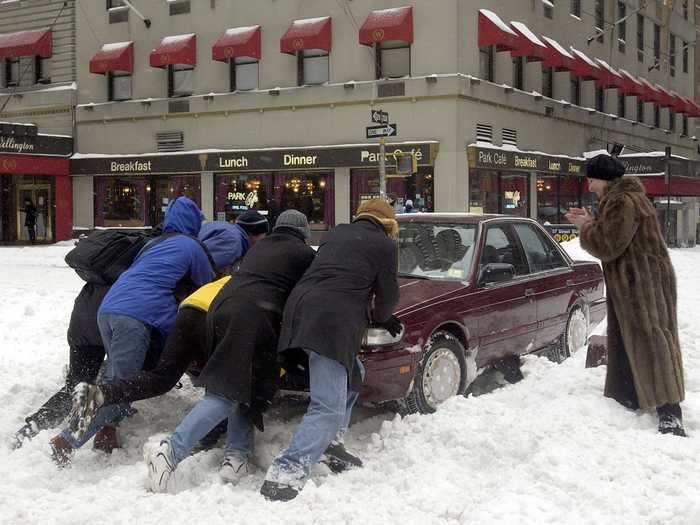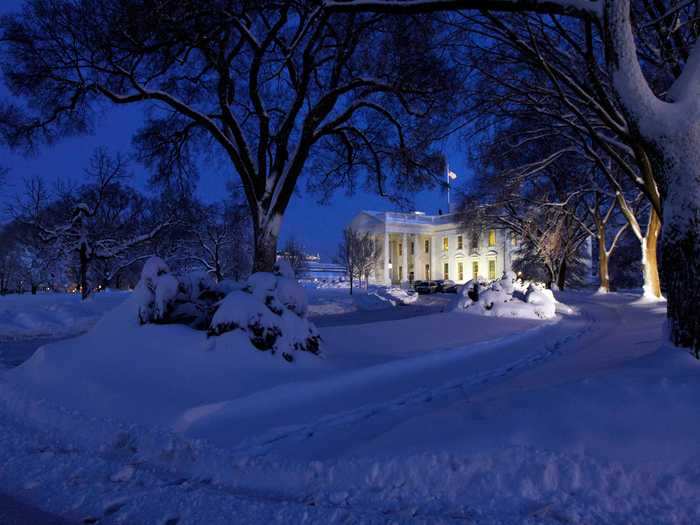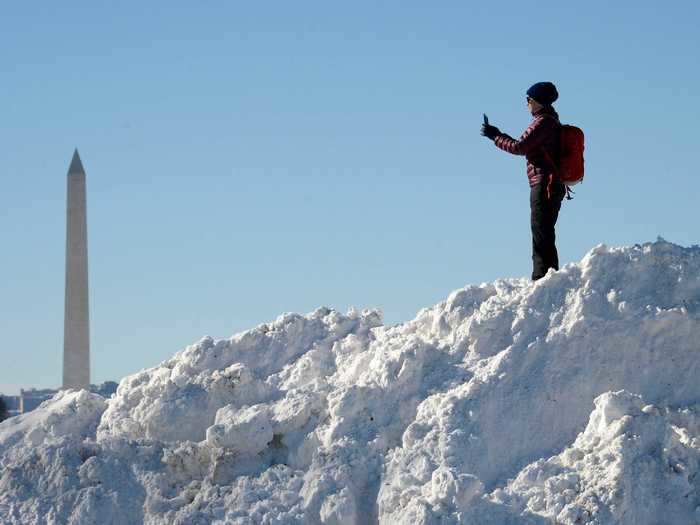Blizzards can be deadly.Curtis Compton/AP
- The Great Blizzard of 1888 remains one of the most devastating storms in US history with a death toll of over 400.
- The Blizzard of 1996 resulted in 150 deaths and around $3 million in damages across the Northeast.
- During the bomb cyclone in March 2019, 25 states were affected.
While some parts of the US see snow much of the year, other states are about to enter their frostiest season. This week, the Northeast is preparing for its first big storm of the winter.
Over the past 150 years, the country has been pummeled with record-breaking blizzards. The Knickerbocker Storm, the Storm of the Century, Snowmageddon - it's the blizzards that earn titles that do the most damage.
Here are 10 blizzards that have brought parts of the US to a standstill.
The Great Blizzard of 1888 remains one of the most devastating storms in US history, with a death toll of over 400.
The awning of a grocery store damaged from the weight of the snow during the Great Blizzard of 1888 in New York City.
AP
In March 1888, the Great Blizzard of 1888 hit the Atlantic coast. New York was pummeled by 22 inches of snow, closing down the Brooklyn Bridge, while other areas received 40 to 50 inches. Over 400 people died, including 100 seafarers, and the damage totaled $20 million.
The Knickerbocker Storm of 1922 caused the roof of the Knickerbocker Theatre in Washington, DC, to collapse, killing 98 and injuring 133.
Cars buried in snow during the Knickerbocker Storm in Washington, DC, in January 1922.
Herbert A. French/Buyenlarge/Getty Images
The Great Appalachian Storm of 1950 snarled Thanksgiving weekend travel.
The Ohio National Guard shovels snow in Cleveland, Ohio, in 1950.
AP
Between 52 and 67 inches of snow covered the central Appalachians over Thanksgiving weekend in 1950. The Category 5 storm caused at least 160 deaths.
The Chicago Blizzard of 1967 covered the city in 23 inches of snow, its highest snowfall on record.
View of a Chicago Transit Authority bus in January 1967.
Robert Abbott Sengstacke/Getty Images
A huge blizzard that slammed the East Coast in 1993 became known as "the Storm of the Century."
A pedestrian walks through snow in Atlanta, Georgia, in March 1993.
Curtis Compton/AP
The Storm of the Century caused $5.5 billion in damages with massive snowfalls from Maine all the way down to Florida (parts of which received six inches). The Category 5 storm also created tornadoes and widespread flooding, affecting 120 million people.
The Blizzard of 1996 resulted in 150 deaths and around $3 million in damages across the Northeast.
John F. Kennedy Airport in New York at a standstill on January 9, 1996.
Mark Lennihan/AP
The Great Blizzard of 2003 brought East Coast cities to a standstill.
People helped push a car stuck on Seventh Avenue during a snow storm in February 2003 in New York City.
Ezra Shaw/Getty Images
From February 14 to 19, the Great Blizzard of 2003 covered the East Coast in several feet of snow. Parts of New York received 2 feet. Berkeley Springs, West Virginia, reported 37 inches, and Garrett County, Maryland, was buried in 40 inches.
Around 2,000 flights were canceled, and 20 people died, according to CNN.
There were three major snowstorms in 20 days in February 2010, including "Snowmageddon" in Washington, DC.
The White House is blanketed in snow in Washington, DC, in 2010.
Alex Brandon/AP
The snowstorm in Washington, DC, on February 5-6, 2010 was dubbed "Snowmageddon," with 17.8 inches of snow. Over 200,000 homes and businesses lost power, according to the Washington Post. Snowmageddon was sandwiched between two other blizzards at the beginning and end of February, prolonging the cleanup process.
"Snowzilla," also known as Winter Storm Jonas, pounded the Northeast and mid-Atlantic with up to three feet of snow in 2016.
A woman takes a picture of the Washington monument in January 2016.
OLIVIER DOULIERY/AFP via Getty Images
The governor of Colorado declared a state of emergency due to a bomb cyclone in March 2019 - the storm affected 25 states.
Denver covered in snow in March 2019.
Hyoung Chang/MediaNews Group/The Denver Post via Getty Images

